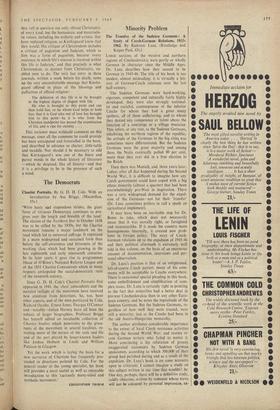The Democrats
'Wrrii hasty and stupendous strides, the giant form of virtuous Democracy continues to pro- gress over the length and breadth of the land.' The elation of the Northern Star in October 1838 was to be stilled by the 1850s, but the Chartist movement remains a major landmark on the road which led to universal suffrage. It expressed in a more widespread and sustained form than before the self-awareness and bitterness of the working class which had been growing in the late eighteenth and early nineteenth centuries. In its later years it gave rise to programmes (those of O'Brien's National Reform League and of the 1851 Chartist Convention) which in many respects anticipated the social-democratic state of the twentieth century.
Since G. D. H. Cole's Chartist Portraits first appeared in 1941, the 'class' antecedents and the socialist twilight of the movement have received new attention from historians. So, too, have other aspects, and of the men portrayed by Cole, Richard Oastler, Ernest Jones, Feargus O'Connor and—notably—Julian Harney have all been the subject of larger biographies. Professor Briggs has himself edited an invaluable collection of Chartist Studies which penetrates to the grass- roots of the movement in several localities, re- vealing more of the nature of the rank and file and of the part played by lesser-known leaders like Joshua Hobson in Leeds and William Pattison in Glasgow.
Yet the work which is laying the basis for a new narrative of Chartism has frequently pro- ceeded in directions pointed by Cole. For the general reader or the young specialist, his book still provides a most useful as well as enjoyable introduction to this 'curiously many-sided and symbolic movement.'
CHRISTOPHER THORNE


































 Previous page
Previous page